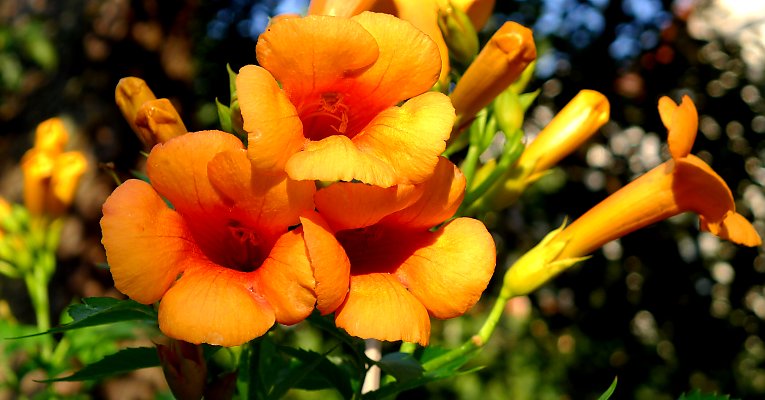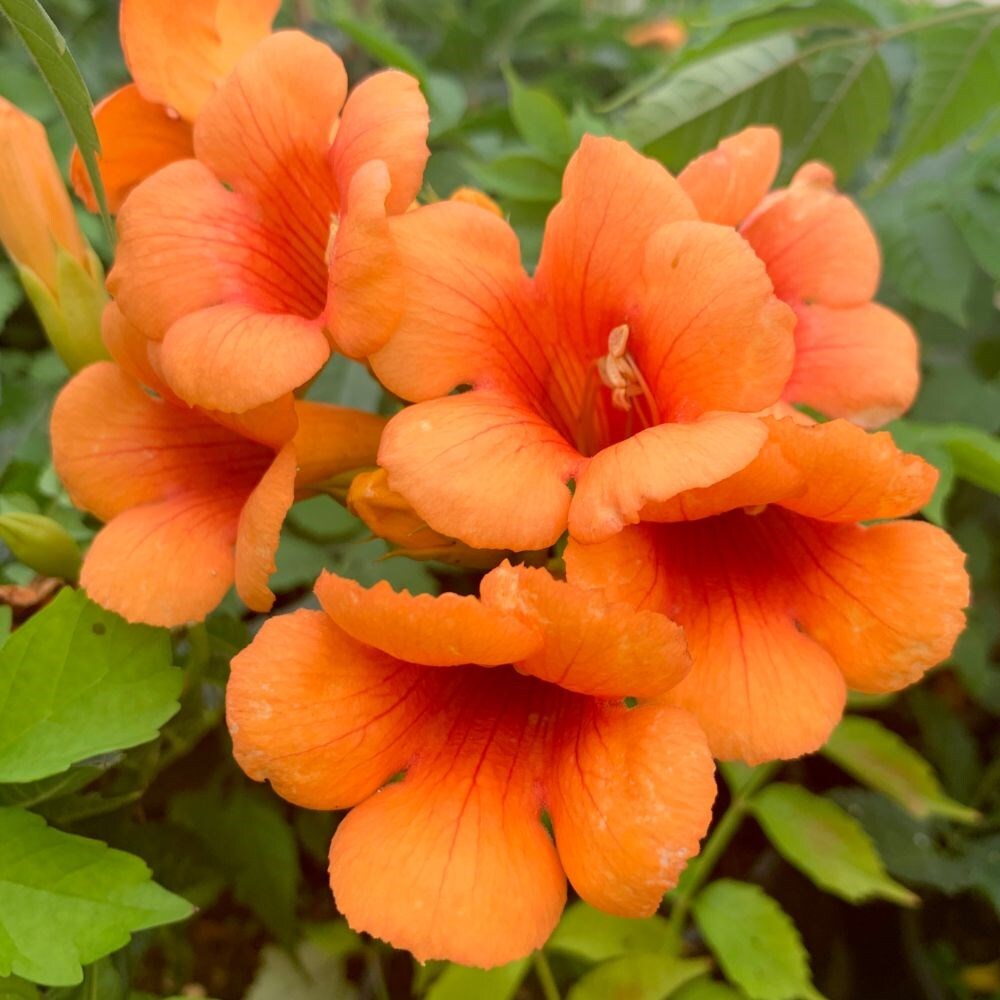Campsis Indian Summer: The Perfect Plant For A Lateseason Bloom
Campsis Indian Summer: The Perfect Plant for a Late-Season Bloom
As the days get shorter and the weather starts to cool, many gardeners are looking for plants that will add a splash of color to their gardens in the fall. Campsis Indian Summer is a perfect choice for this time of year, as it produces beautiful orange-red trumpet-shaped flowers from late summer to early autumn.
Campsis Indian Summer is a hybrid of two species of trumpet vine, Campsis radicans and Campsis grandiflora. It is a vigorous climber that can reach heights of 20 feet or more. The leaves are pinnate, with up to 15 leaflets, and are dark green in color. The flowers are trumpet-shaped, 3 inches long, and are flushed salmon-yellow to rich orange-red deep in the throat. They are very fragrant and attract hummingbirds and butterflies.
Campsis Indian Summer is easy to care for and is relatively pest- and disease-free. It prefers full sun and moist, well-drained soil. It is hardy in USDA zones 4-9.
To plant Campsis Indian Summer, dig a hole that is twice as wide as the root ball and as deep as the root ball. Backfill the hole with soil, tamping it down as you go. Water the plant well after planting.
Campsis Indian Summer does not need to be pruned often, but it can be pruned in late winter or early spring to control its size and shape. To prune, simply remove any dead, diseased, or damaged branches. You can also thin out the plant by removing some of the older branches.
Campsis Indian Summer is a beautiful and easy-care plant that is perfect for adding a splash of color to your garden in the fall. If you are looking for a plant that will bloom late in the season, Campsis Indian Summer is a great choice.
Here are some additional tips for growing Campsis Indian Summer:
- Plant in a location that receives full sun.
- Water regularly, especially during hot, dry weather.
- Fertilize in the spring with a balanced fertilizer.
- Protect from cold winter winds.
- Prune in late winter or early spring to control size and shape.
Campsis Indian Summer is a beautiful and versatile plant that can be used in a variety of ways in the garden. Here are a few ideas:
- Plant it against a fence or wall to create a colorful backdrop.
- Train it to climb up a trellis or arbor.
- Use it to cover an unsightly area.
- Plant it in a container on a patio or deck.
No matter how you choose to use it, Campsis Indian Summer is sure to add a touch of beauty and interest to your garden.
Campsis Indian Summer is a beautiful, fast-growing climbing vine that is known for its showy, trumpet-shaped flowers. The flowers are a vibrant yellow-orange color with red throats, and they bloom in late summer and early autumn. Campsis Indian Summer is a relatively easy plant to care for, and it can be grown in a variety of climates. It prefers full sun and moist, well-drained soil.
If you are looking for a stunning addition to your garden, Campsis Indian Summer is a great choice. It is a low-maintenance plant that will provide you with beautiful flowers for many years to come. To learn more about Campsis Indian Summer, please visit Garden Wiki.
FAQ of campsis indian summer
- What is Campsis Indian Summer?
Campsis Indian Summer is a fast-growing climbing vine that is native to North America. It is known for its showy, trumpet-shaped flowers that bloom in summer. The flowers are yellow-orange with red throats, and they attract bees and butterflies. Campsis Indian Summer can grow up to 30 feet long, and it is a good choice for covering fences, walls, or arbors.
- How do I care for Campsis Indian Summer?
Campsis Indian Summer is a relatively easy plant to care for. It prefers full sun and moist, well-drained soil. It is drought-tolerant once established, but it will benefit from regular watering during the first year after planting. Campsis Indian Summer does not require much fertilizer, but you can fertilize it once a year in spring with a balanced fertilizer.
- How do I propagate Campsis Indian Summer?
Campsis Indian Summer can be propagated by cuttings or by division. To propagate by cuttings, take 6-inch cuttings in early spring from healthy, new growth. Dip the cuttings in rooting hormone and plant them in a well-draining potting mix. Keep the cuttings moist and in a warm location, and they should root in about 4-6 weeks. To propagate by division, dig up a mature plant in early spring and divide it into two or more sections. Each section should have at least one healthy root. Plant the divisions in a well-draining location and water them well.
- Is Campsis Indian Summer invasive?
Campsis Indian Summer can be invasive in some areas. It is important to plant it in a location where it will not be able to spread to other areas. If you are concerned about the plant being invasive, you can choose a different variety of trumpet creeper, such as Campsis radicans 'Flava', which is less invasive.
- What are the pests and diseases that affect Campsis Indian Summer?
Campsis Indian Summer is relatively resistant to pests and diseases. However, it can be susceptible to aphids, scale insects, and powdery mildew. If you see any pests or diseases on your plant, you can treat them with an insecticidal soap or fungicide.
Image of campsis indian summer
5 different images of "campsis indian summer" from pinterest.com:
- Image 1: A large, sprawling campsis vine with bright orange flowers in full bloom.

- Image 2: A close-up of the flowers of a campsis vine, showing their trumpet-shaped petals and orange-red color.

- Image 3: A campsis vine growing up a trellis, its flowers cascading down in a waterfall of color.

- Image 4: A campsis vine in full bloom, its flowers providing a splash of color against a backdrop of green foliage.

- Image 5: A campsis vine with its leaves turning to shades of red and orange in the fall, providing a beautiful display of autumn color.

Post a Comment for "Campsis Indian Summer: The Perfect Plant For A Lateseason Bloom"